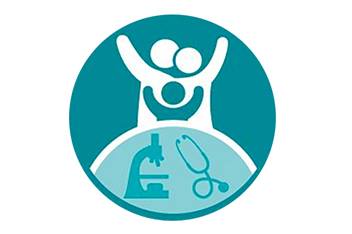Randomized Trial for Newly Diagnosed High Risk B-precursor Acute Lymphoblastic Leukemia and testing Clofarabine in the Very High Risk Stratum
First Posted: December
Condition(s): Acute Lymphoblastic Leukemia (ALL), Down Syndrome
NCT Number: NCT02883049
What Is the Purpose of This Study?
- To find out if using chemotherapy with ITT improves survival rates better than using chemotherapy with IT MTX for HR-AL
- To compare the effects, good and/or bad, of chemotherapy with ITT to chemotherapy with IT MTX for HR-ALL to find out which is better. In this study, you will get either the ITT or the IT MTX. You will not get both.
- To better understand the effects of cancer treatment in people with HR-ALL (Down Syndrome: DS-ALL or DS HR-ALL).
Who Can Take Part in This Study?
- Patients must have newly diagnosed B-precursor ALL. Patients with Down syndrome are also eligible.
- Patients must not have received any prior cytotoxic chemotherapy for the current diagnosis of ALL or any cancer diagnosed previously, with the exception of steroids and intrathecal cytarabine for the current diagnosis of ALL. Patients cannot have secondary ALL that developed after treatment of a prior malignancy with cytotoxic chemotherapy.
- Patients receiving prior steroid therapy may be eligible for AALL1131
- Ages 1 to 31 years
For a full list of eligibility requirements, visit https://clinicaltrials.gov/study/NCT02883049
What Will Happen During This Study?
(Non-Down Syndrome: HR-ALL or VHR-ALL)
Random Assignment
People taking part on this study (subjects) will receive 1 of 2 different treatment plans (also called ‘arms’). The treatment plan that you receive is decided by a process called randomization. Randomization means that the treatment is assigned based on chance.
Arm A: Patients receive therapy that is standard including age adjusted intrathecal methotrexate. This is the standard arm.
Arm B: Patients receive therapy that is standard with triple intrathecal therapy (methotrexate, hydrocortisone and cytosine arabinoside) instead of intrathecal methotrexate. This is the experimental arm.
Induction
People taking part on this study (subjects) will receive a standard treatment plan during Induction. Induction therapy will be given over 4 weeks.
Post Induction
A number of factors were used to identify you as having HR-ALL. These factors included the results of research tests (FISH, MRD and hypodiploidy) done on leukemia cells before the start of, and during Induction therapy, as well as your age and the presence or absence of leukemia cells in your spinal fluid or brain.
The treatment involves cancer fighting medicine called chemotherapy and radiation therapy for patients with testicular disease. Post-Induction treatment on this study is divided into 4 stages: Consolidation, Interim Maintenance, Delayed Intensification and Maintenance.
Timing
Female patients are expected to receive treatment on this study for about 2¼ years. Because males receive longer Maintenance therapy, males are expected to receive treatment on this study for about 3¼ years.
(Down Syndrome: DS-ALL or DS HR-ALL)
The treatment plan involves cancer fighting medicine called chemotherapy as well as radiation therapy for people taking part in this study (subjects) with leukemia cells in the testes. Treatment on this study will be given in the following phases: Induction, Consolidation, Interim Maintenance, delayed Intensification and Maintenance. Subjects are people who agree to participate in this study.
Studies have shown that subjects who have Down syndrome are more likely to suffer serious side effects from treatment with chemotherapy than subjects without Down syndrome. Subjects with Down syndrome are particularly sensitive to certain chemotherapy medications, such as methotrexate. To help lessen the side effects of methotrexate, you will be given a vitamin called leucovorin, every time you are given methotrexate into your spinal fluid except during Maintenance therapy. You will also be closely monitored throughout your treatment for various side effects. Additionally, you will be receiving treatment during Induction and post-Induction with the following modifications:
Induction
During Induction, subjects will receive modified therapy that is less intense than normal. Therapy will be given in such a way that subjects that do not need an additional drug, daunorubicin, will not have to be exposed to the side effects that this drug may have. This will be determined by a bone marrow test that will be done halfway into Induction therapy.
All subjects get the same treatment in the first half of Induction, except for the type of steroid used; which will depend on your age.
If you are less than 10 years old, the steroid dexamethasone will be used. If you are equal to or above 10 years old, prednisone will be used.
After all patients have received Induction treatment for 14 days, a bone marrow test will be done to assess your response to the treatment so far (called early response status). The remaining therapy you get for Induction will depend on your early response status, described below:
- Rapid Early Responders (RER) these subjects respond quickly to treatment. The results of bone marrow tests show signs that the leukemia has been removed and these patients reach remission very soon after the start of treatment. Rapid early responders will therefore continue with Induction therapy as before, for the remainder of Induction therapy.
- Slow Early Responders (SER) these subjects respond to treatment more slowly and take longer to reach remission. Also, once they reach remission, more therapy is needed to maintain that remission. Since SERs are at greater risk of the leukemia coming back, for the remainder of Induction therapy, they will continue with treatment as before, plus they will receive an additional drug called daunorubicin. The dose of daunorubicin that is given on this study is lower than that used on previous studies.
- Because chemotherapy can make your blood counts low causing serious side effects like infections and bleeding, you will also get a drug called a myeloid growth factor (example filgrastim) that will help your counts to recover.
Post-Induction
During Interim Maintenance, subjects with Down syndrome will be given intermediate dose methotrexate instead of high dose methotrexate because it is known that children with Down syndrome are more sensitive to this drug.
In this study, vincristine and prednisone will be given at regular 12 week intervals (called pulses) for children with Down syndrome, instead of 4 week intervals as will be given to other children on the study, in order to try and reduce these bad effects. In most COG ALL studies, boys are treated for about a year (12 months) longer than girls. In this study, boys will be treated for the same length of time as girls to reduce the risk of serious side effects during Maintenance treatment.
Timing
People in this clinical trial are expected to receive treatment on this study for about 2 ½ years. After treatment, you will have follow-up examinations and medical tests.



